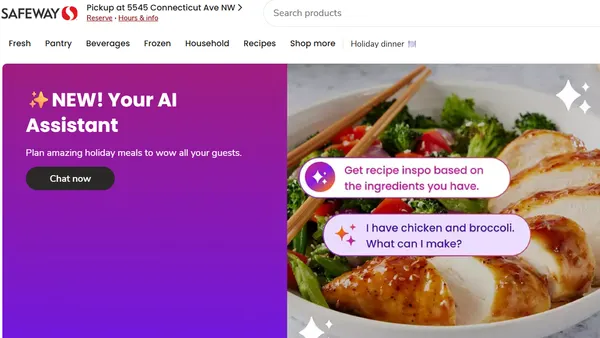Dive Brief:
- Walmart will now accept Supplemental Nutrition Assistance Program (SNAP) benefits for online grocery orders at all of its pickup locations, a spokesperson for Walmart confirmed to Grocery Dive in an email.
- Walmart currently offers grocery pickup at more than 2,500 stores nationwide, with plans to expand to 3,100 pickup locations by year's end. SNAP will be accepted at additional locations as they are added.
- The only difference in the online experience for shoppers purchasing groceries using SNAP is that they will select "EBT card" as their payment option at checkout.
Dive Insight:
Organizations and retailers are speaking up in support of better food access for SNAP recipients, hoping to earn additional revenue from the more than 40 million Americans who receive assistance through the program.
Walmart, along with Amazon and ShopRite, joined a USDA pilot program in April that is testing online grocery delivery for SNAP participants in New York. Walmart first piloted accepting SNAP for online grocery orders in 2017, allowing shoppers in Houston and Boise, Idaho to pay with their benefits.
The New York program covers the cost of food but not the delivery fee retailers charge, which could prove to be a hurdle for SNAP consumers. Walmart's pickup service, on the other hand, is free, making it an added convenience for consumers without requiring them to pay any additional money.
There are still potential barriers to adoption, though. While nearly three-quarters of Americans have access to broadband at home, the number drops to 56% for those with household incomes below $30,000, according to a new study from the Pew Research Center. About one in four low-income Americans are "smartphone only" users.
Walmart has released one new grocery announcement after another lately, from this SNAP expansion to a $98-annual grocery delivery subscription to its new InHome Delivery. With a steady stream of initiatives to boost its grocery business, the retailer is strengthening its position as a go-to grocer for online and in-store consumers across the U.S.











